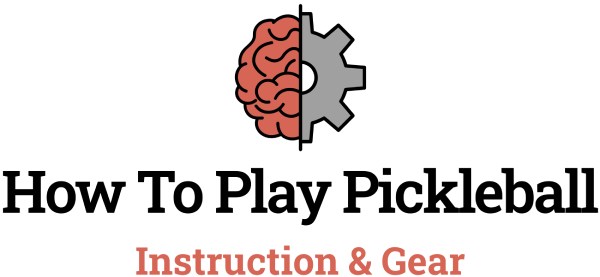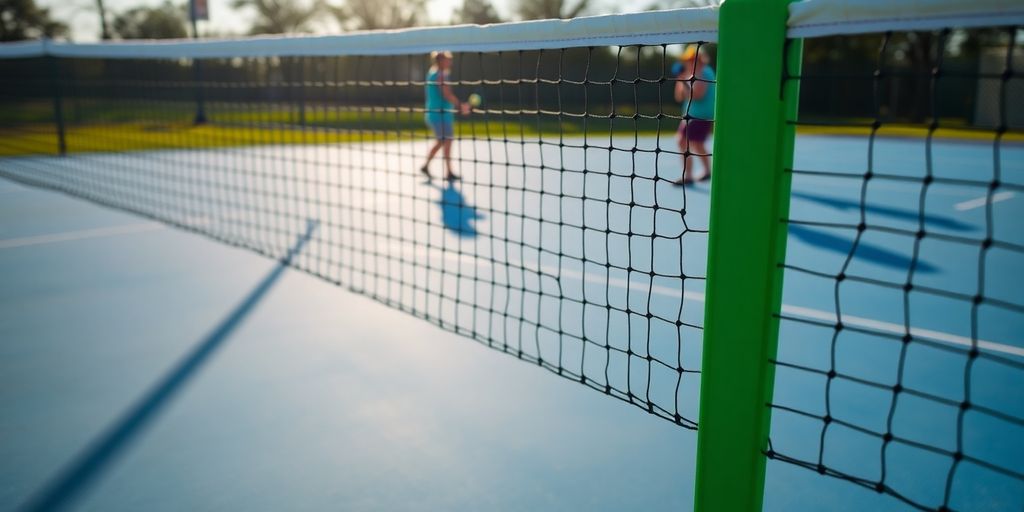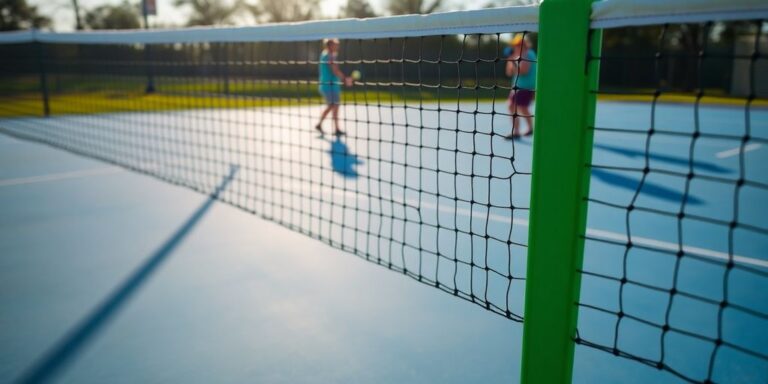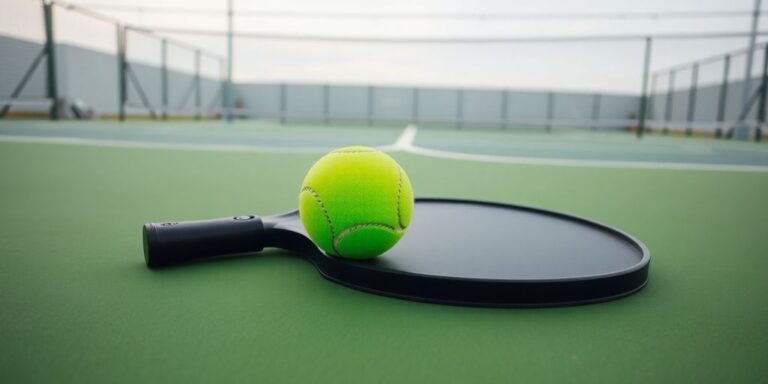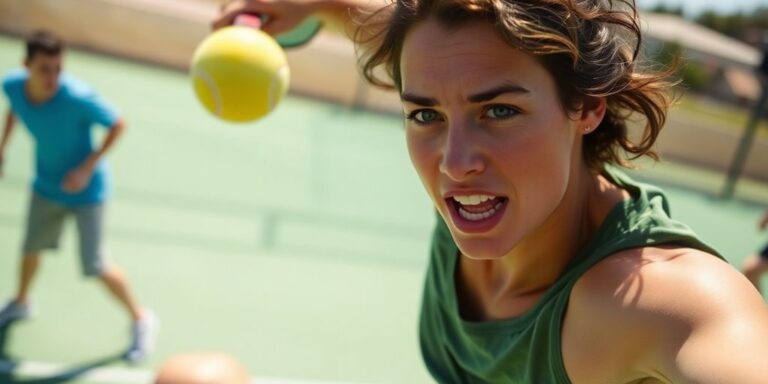So, everyone’s talking about pickleball these days, right? It’s gone from this little-known sport to, like, everywhere. And now, it seems like pickleball taking over tennis courts is becoming a real thing. This article looks into what’s happening with these two sports and why tennis courts are sometimes turning into pickleball courts.
Key Takeaways
- Pickleball’s growth is really fast, with millions of new players joining in just a few years.
- A good chunk of tennis courts, maybe 10% or more, are being changed for pickleball.
- Clubs and facilities can make more money by converting tennis courts because more people can play pickleball on the same space.
- Tennis groups are trying to keep their sport growing and are even looking at new court ideas.
- The future of court space will likely depend on what players want and how much money can be made from each sport.
The Escalating Court Conflict: Pickleball Taking Over Tennis Courts
The Battle for Shared Space
It’s no secret that pickleball has exploded in popularity, and with that boom comes a bit of a turf war. Tennis courts, once solely dedicated to the sport of kings, are now increasingly being eyed, and sometimes converted, for pickleball. This isn’t just a casual observation; it’s a real issue playing out in communities and clubs across the country. The demand for pickleball courts is so high that existing tennis facilities are often the easiest targets for conversion. This shift creates a direct conflict for space, leaving tennis players scrambling for available courts.
The rapid rise of pickleball has put immense pressure on existing sports infrastructure. What was once a clear division of space between different racquet sports is now a blurred line, with facilities managers and city planners trying to figure out how to accommodate everyone without alienating long-time users.
USTA’s Concerns Over Infrastructure
The United States Tennis Association (USTA) isn’t exactly thrilled about this trend. They’ve voiced concerns that the conversion of tennis courts to pickleball courts is actually hurting tennis’s growth. It’s not just about losing a court here or there; it’s about the overall infrastructure. When courts are repainted or repurposed, it means fewer places for tennis players to practice, compete, and grow the sport. Lew Sherr, the USTA CEO, has even stated that there aren’t enough courts to support tennis’s continued expansion, and that existing court infrastructure is being compromised. It’s a big deal when a major sports organization starts talking about their facilities being
Economic Drivers Behind Court Conversions
Maximizing Revenue Per Court
It’s pretty clear why facility owners are looking at pickleball with dollar signs in their eyes. A single tennis court, which usually hosts four players for a doubles match, can be easily transformed into multiple pickleball courts. This means you can fit way more people into the same amount of space. Think about it: if you can get eight players on two pickleball courts where you used to only have four tennis players, that’s double the revenue from the same footprint. It’s a no-brainer for places trying to make the most out of their property.
The financial incentive to convert tennis courts to pickleball courts is substantial, driven by the ability to accommodate a higher volume of players and generate increased income from the same physical space. This economic reality is a primary factor in the ongoing shift.
Cost-Effective Court Repurposing
Converting a tennis court to a pickleball court isn’t some huge construction project. It’s actually pretty simple and cheap. All you really need is some paint to mark the new lines and maybe some portable nets. You don’t have to tear anything down or build anything new. This low barrier to entry makes it super attractive for clubs and recreational centers. Why spend a ton of money building new facilities when you can just repaint what you already have? This cost efficiency is a major factor in the rapid expansion of pickleball facilities.
- Minimal material costs for court lines and portable nets.
- No need for extensive demolition or new construction.
- Quick turnaround time for conversion, meaning less downtime for revenue generation.
Commercial Sense for Private Clubs
For private clubs, it just makes good business sense to embrace pickleball. They’re always looking for ways to attract new members and keep existing ones happy. Pickleball’s popularity means there’s a huge demand for courts. By offering pickleball, clubs can tap into this growing market. Plus, with more players on the courts, there’s more activity, more buzz, and potentially more spending on other club amenities like food and beverages. It’s a win-win for their bottom line. The future of pickleball looks bright, and clubs are noticing.
Here’s a quick look at the economic advantages:
| Factor | Tennis Court | Pickleball Court (per tennis court space) |
|---|---|---|
| Players per court | 4 | 8-16 |
| Conversion Cost | High (new build) | Low (paint, nets) |
| Revenue Potential | Standard | Significantly Higher |
This table clearly shows why clubs are making the switch. The pickleball paddle market is also booming, showing the overall growth of the sport.
The Shifting Landscape of Racquet Sports
Pickleball’s Unprecedented Participation Surge
It’s pretty clear that pickleball isn’t just a passing fad; it’s really taken off. The numbers don’t lie, and they show a massive jump in people playing. We’re talking about a sport that went from being a niche activity to something everyone seems to be trying out. This surge isn’t just a small bump; it’s a huge wave that’s changing how we think about racquet sports.
- Over 10 million people have picked up a pickleball paddle in the last year.
- Participation has shot up by 223.5% in just three years.
- New courts are popping up everywhere to keep up with demand.
The growth of pickleball is a testament to its accessibility and fun factor. It’s a game that welcomes players of all skill levels, making it easy for anyone to jump in and start playing. This broad appeal is a big reason why it’s become so popular so quickly.
Tennis Losing Ground to Pickleball
While pickleball is soaring, tennis seems to be feeling the pinch. It’s not that tennis is disappearing, but it’s definitely facing some challenges, especially when it comes to court space. A lot of tennis courts are being converted, and that’s a big deal for tennis players. The USTA even said that at least 10% of tennis courts in the U.S. have been repurposed for pickleball. This shift means fewer places for tennis players to play, which can slow down its growth.
Industry Data on Sport Growth
When you look at the data, it paints a clear picture of what’s happening in the world of racquet sports. The Sports and Fitness Industry Association (SFIA) has been tracking this, and their reports show a significant trend. Pickleball’s rapid growth is undeniable, and it’s having a ripple effect across the entire industry. It’s not just about who’s playing what; it’s also about how facilities are adapting.
| Sport | Participation Growth (Last 3 Years) |
|---|---|
| Pickleball | 223.5% |
| Tennis | 4.5% |
| Badminton | 2.1% |
This table really highlights the difference. While other sports are seeing modest gains, pickleball is in a league of its own. This kind of growth means that facilities are looking at court conversions as a way to meet demand, even if it means less space for tennis. It’s a business decision, really, because tennis programs might generate more revenue per court, but the sheer volume of pickleball players is hard to ignore.
Player Demographics and Accessibility
Pickleball’s Broad Appeal Across Age Groups
Pickleball isn’t just for one type of person; it really pulls in players from all walks of life. You see young kids, teenagers, adults, and even seniors all playing together on the same courts. It’s pretty wild how a sport can bridge those age gaps so easily. The game’s simpler mechanics and smaller court size make it less physically demanding than tennis, which opens it up to a much wider range of ages and fitness levels. This accessibility is a big reason why it’s grown so fast. It’s not uncommon to see a grandparent playing doubles with their grandchild, something you don’t always get with other sports.
Higher Female Participation in Pickleball
One interesting trend we’ve noticed is the higher number of women getting into pickleball compared to tennis. While tennis has a good female following, pickleball seems to have really captured the attention of women across various age groups. This might be due to a few factors:
- The social aspect: Pickleball often involves more casual, conversational play, which can be appealing.
- Lower injury risk: The game’s gentler pace means fewer high-impact movements, reducing the chance of injuries.
- Ease of learning: It’s quicker to pick up the basics, making it less intimidating for newcomers.
- Community focus: Many pickleball groups emphasize camaraderie and fun over intense competition.
Inclusive Nature of Pickleball
Pickleball’s design inherently promotes inclusivity. Its smaller court and slower ball speed mean that players don’t need to cover as much ground or possess extreme athletic prowess. This allows for longer rallies and more engaging play for everyone, regardless of their athletic background. It’s a sport where strategy and touch can often outweigh raw power, leveling the playing field and making it enjoyable for a diverse group of participants. This welcoming atmosphere is a major draw, encouraging more people to try it out and stick with it.
This inclusive vibe is a huge part of the pickleball appeal. It’s not just about who can hit the hardest or run the fastest. It’s about getting out there, having some fun, and being active. The fact that it’s less strenuous than something like tennis means more people can participate without feeling completely wiped out or risking injury. It’s a great way to stay active and social, and that’s something everyone can get behind. The reduced physical demand is a big plus for many.
Strategic Responses from Tennis Organizations

USTA’s Efforts to Support Tennis Growth
The United States Tennis Association (USTA) isn’t just sitting back and watching pickleball take over. They’re actually pretty busy trying to keep tennis relevant and growing. They’ve got plans to get more people playing, and they’re looking at ways to make sure tennis courts are still around for tennis players. It’s a big job, especially with pickleball’s popularity.
Funding New Court Construction
One of the main things the USTA is doing is putting money into building new tennis courts. They know that if there aren’t enough places to play, people will just go somewhere else. So, they’re trying to make sure there are plenty of courts for everyone who wants to play tennis. This also helps with the whole court-sharing issue, where pickleball sometimes uses tennis courts. They’re trying to expand the overall court infrastructure, not just fight over existing spaces.
Here’s a quick look at some of their court construction goals:
- Increase the number of dedicated tennis courts nationwide.
- Support local communities in developing new tennis facilities.
- Provide grants and resources for court maintenance and upgrades.
It’s clear the USTA understands that having enough places to play is key to keeping tennis strong. They’re investing in the future of the sport by making sure there are plenty of courts available, which is a smart move in the face of rising competition from other racquet sports. They’re also looking at ways to increase revenue per player at these new facilities.
Introducing Red Ball Tennis as a Countermeasure
Another strategy the USTA is using is something called Red Ball Tennis. This is basically a modified version of tennis for younger kids, using softer, slower balls and smaller courts. The idea is to make tennis more accessible and fun for beginners, getting them hooked on the sport early. It’s a way to build a new generation of tennis players from the ground up. They’re hoping this early exposure will create lifelong tennis enthusiasts, even with the allure of pickleball. They’re also exploring how an automated court reservation system could help manage court usage for these new programs. This is part of a broader strategy, similar to how Old Coast Pickleball has developed strategies for new club operators.
The Future of Court Space Allocation

Market Forces Guiding Court Conversions
It’s pretty clear that market forces are playing a huge role in how court space gets used. When you look at it, a single tennis court can fit four pickleball courts. This means clubs can get more players on the same amount of land, which makes a lot of commercial sense. The economics of pickleball are just too good for many facilities to ignore. It’s not just about fitting more people; it’s about maximizing revenue. If a club can charge eight players for pickleball on the same space where they used to charge four for tennis, that’s a big win for their bottom line. This trend is likely to continue as long as pickleball’s popularity keeps soaring.
Addressing the Demand for Pickleball Courts
The demand for pickleball courts is off the charts, and it’s forcing a lot of places to rethink their court layouts. It’s not just private clubs; public parks are feeling the pressure too. Converting a tennis court to pickleball is relatively simple, often just needing some new paint lines. This low barrier to entry makes it an attractive option for communities trying to keep up with player interest. The Los Angeles Department of Recreation and Parks, for example, is looking at converting tennis courts to pickleball courts to meet this demand, even though it’s causing some arguments among tennis players. This kind of court conversion is becoming more and more common.
Long-Term Implications for Tennis Facilities
So, what does all this mean for tennis facilities in the long run? Well, it’s a mixed bag. On one hand, tennis organizations like the USTA are worried about losing ground. They’re seeing courts repurposed, and it’s making it harder to support tennis growth. On the other hand, some argue that this shift might push tennis facilities to innovate and find new ways to attract players. The fact that pickleball courts are so much more space-efficient means that the overall footprint for racquet sports might actually shrink, or at least change dramatically. The future of pickleball is bright, but it definitely puts pressure on tennis to adapt.
The ongoing shift in court allocation highlights a fundamental change in how recreational spaces are valued. Facilities are prioritizing sports that offer higher participation rates and better economic returns, which means tennis will need to find new strategies to maintain its footprint and attract players in this evolving landscape.
Expert Opinions on the Court Takeover
Novak Djokovic’s Warning on Tennis’s Future
Even top tennis players are starting to notice the shift. Novak Djokovic, a legend in the tennis world, has openly talked about how pickleball could really shake things up for tennis in the long run. It’s not just a casual observation; it’s a genuine concern from someone who lives and breathes the sport. He’s seen the numbers, the enthusiasm, and the way pickleball is just exploding in popularity. This isn’t just about a new sport; it’s about a potential redefinition of court sports as we know them.
- The rapid growth of pickleball is undeniable.
- Court space is a finite resource, leading to direct competition.
- The accessibility of pickleball makes it appealing to a wider audience.
USA Pickleball CEO’s Perspective
Mike Nealy, the CEO of USA Pickleball, has a pretty straightforward take on the whole situation: "The market will find its way." This perspective suggests that the demand for pickleball courts is so strong that the market will naturally adjust to meet it, even if it means converting existing tennis courts. It’s a supply-and-demand issue, pure and simple. From their point of view, it’s about accommodating the fastest-growing sport in America, and if that means tennis courts become pickleball courts, then so be it. It’s a pragmatic approach that prioritizes growth and participation in their sport.
The shift in court usage isn’t a hostile takeover but a natural evolution driven by player preference and economic viability. Facilities are simply responding to what their members and the broader community want to play, and right now, that’s often pickleball.
Industry Leaders on Court Infrastructure
Industry leaders are grappling with the implications of this court conversion trend. The United States Tennis Association (USTA) has voiced concerns, noting that at least 10% of tennis courts in the U.S. have already been repurposed for pickleball. Lew Sherr, the USTA CEO, has stated that there aren’t enough courts to support tennis growth, and existing court infrastructure is being compromised. This isn’t just about losing a few courts; it’s about the long-term health and expansion of tennis. The economics are hard to ignore: a tennis court that serves four players can be divided into at least two pickleball courts, potentially serving eight players. This makes pickleball courts a more commercially attractive option for many private clubs looking to maximize revenue. The ease of converting a tennis court to a pickleball court—often just a matter of repainting lines—also makes it a quick and cost-effective decision for facility managers. The sport of pickleball is growing so fast, it’s hard for facilities to keep up.
Many smart people have shared their thoughts on the court situation. Want to know what they said? Head over to our website to read all the different ideas and opinions. You’ll find out what the experts really think about this big change.
Conclusion
So, what’s the real deal with pickleball and tennis? It’s pretty clear that pickleball is here to stay, and it’s definitely shaking things up for tennis. We’ve seen how many courts are getting switched over, and it makes sense why clubs are doing it—more players, more money. But tennis isn’t just sitting around. They’re trying new things, too, to keep their game strong. It’s not really about one sport winning and the other losing. It’s more about both sports finding their place and figuring out how to grow alongside each other. Maybe there’s enough room for everyone, even if it means sharing some court space.
Frequently Asked Questions
Why is pickleball becoming so popular?
Pickleball is growing super fast because it’s easy to learn and fun for everyone, no matter their age or how good they are at sports. You don’t need a lot of fancy gear, and the courts are smaller, so it’s less running than tennis. Plus, it’s a great way to hang out with friends.
Why are tennis courts being turned into pickleball courts?
Many tennis courts are being changed into pickleball courts because pickleball needs less space. You can fit multiple pickleball courts on one tennis court, which means more people can play at the same time. This makes more money for clubs and centers.
How is tennis reacting to pickleball’s growth?
The USTA, which is the main tennis group in the U.S., is worried about losing court space. They say that about 10% of tennis courts have already been changed for pickleball. They are trying to build new courts and teach a simpler version of tennis called Red Ball Tennis to keep more people playing tennis.
Is pickleball easier to play than tennis?
Pickleball is generally easier on your body than tennis. The court is smaller, and the ball moves slower, so there’s less running and less impact on your joints. This makes it a good choice for older players or those who want a less intense workout.
Can people play both tennis and pickleball?
Yes, it’s possible to play both sports. Many people enjoy both tennis and pickleball because they offer different kinds of fun and exercise. Some clubs even have courts for both sports, so players can switch between them.
What does the future hold for tennis and pickleball courts?
The future will likely see a mix of both sports. As more people want to play pickleball, more courts will be made for it. But tennis will still be around, and groups like the USTA are working to make sure there are enough tennis courts for everyone who wants to play.
